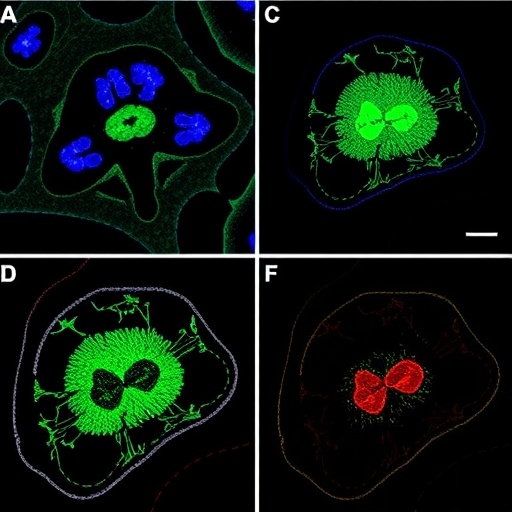
Credit: Photo courtesy of VIMS.
Earth's oceans have soaked up about a third of the carbon dioxide added to the atmosphere by humans through use of fossil fuels and other activities. That's good news for those concerned with greenhouse warming, but bad news for the marine life that's sensitive to the increasing acidity extra CO2 brings to ocean waters.
Dr. Elizabeth Shadwick, an assistant professor at William & Mary's Virginia Institute of Marine Science, has now deployed a high-tech mooring beneath the seasonally ice-covered waters around Antarctica to better understand ocean acidification in polar regions, particularly during the poorly studied winter months. Funding for her work comes from the National Science Foundation's Office of Polar Programs.
To date, knowledge of CO2 levels in the Southern Ocean around Antarctica relies almost exclusively on data collected by research vessels and resupply ships during summer's brief window of ice-free water. Shadwick's mooring will extend this record year round, right through the long polar winter.
The mooring, a line anchored to the seafloor in about 1,600 feet of water and held vertically by beach-ball-size floats, terminates about 60 feet below the sea surface, well beneath the scour of winter sea ice. It includes cutting-edge sensors that can measure concentrations of dissolved carbon dioxide every three hours throughout the mooring's six-month deployment. Other sensors will measure pH, temperature, salinity, and dissolved oxygen. All data are stored in waterproof memory cards until the mooring is retrieved.
"The autonomous sensors will allow us to monitor the full annual cycle of carbon dioxide in Antarctica's coastal waters, for the first time," says Shadwick. She and VIMS marine technician Olivia De Meo plan to recover the just-deployed mooring in early May–late autumn in Antarctica–when they will also deploy a second identical mooring to be recovered the following December.
Deployment and retrieval takes place from the U.S. research vessel Laurence M. Gould. Retrieval involves using stored GPS coordinates to relocate the mooring–which is not visible at the surface–then freeing it from its seabed tether by pinging a release mechanism with an acoustic signal. The mooring can then float to the surface, where crewmembers hook it with a grapple and hoist it aboard.
Acidification in the Southern Ocean
Because the Southern Ocean plays such an important role in the global carbon cycle–storing almost half the human-induced emissions that have been taken up by seawater–data from Shadwick's moorings should lead to a better understanding of global climate change and an improved ability to predict its worldwide impacts.
"From observations in places like Hawaii and Bermuda, we know the surface ocean is tracking the increase in atmospheric CO2," says Shadwick. "What's less well understood is whether the polar seas are also tracking this increase, since they are out of contact with the atmosphere for several months each year when ice is present."
Modeling based on shipboard measurements from recent Antarctic summers suggests that rising CO2 concentrations will lead to big trouble for local marine life beginning around 2070–when the resulting decrease in pH may impact animals that form shell or skeletons out of calcium carbonate minerals. Shadwick and other scientists are particularly concerned about impacts to microscopic organisms at the bottom of the polar food web, and how those impacts might ripple up to affect fishes, penguins, seals, and whales.
Understanding the wintertime conditions, says Shadwick, is important because unlike in summer, when photosynthesis by marine algae removes CO2 from the water and enhances pH, in winter CO2 is released through respiration or decay of algal blooms, leading to conditions with naturally low pH.
"Using sparse observations of wintertime conditions," says Shadwick, "our models predict the Southern Ocean will become undersaturated with respect to carbonate by the year 2030–roughly 30 years earlier than projections based on conditions representing an annual average, and up to 70 years earlier than those based on summer observations alone." Carbonate undersaturation means that calcium carbonate minerals are more energetically costly for animals to make; carbonate shells may even begin to dissolve in seawater with low pH.
Shadwick cautions, however, that these projections could change based on a number of feedback mechanisms that remain poorly understood. These include continued warming; freshening due to increased melting of sea ice and land-based glaciers; enhanced biological productivity due to a longer open water season, increased delivery of nutrients, or both; and intrusions of carbon-rich water onto the continental shelf from deeper waters nearby.
To better understand these potential feedbacks, Shadwick and collaborators will analyze the mooring data in light of a whole suite of other biological and physical measurements from surrounding waters. The mooring lies within the study area of the Palmer Antarctic Long-Term Ecological Research program, which–as the name implies–was established to monitor year-to-year and decade-to-decade changes in the ecosystems of the West Antarctic Peninsula near the U.S. Palmer Research Station. PAL-LTER scientists have been collecting data in the area since 1991. Shadwick's project has also been endorsed by the Southern Ocean Observing System (SOOS).
###
Media Contact
David Malmquist
[email protected]
804-684-7011
@VIMS_News
http://www.vims.edu
############
Story Source: Materials provided by Scienmag





